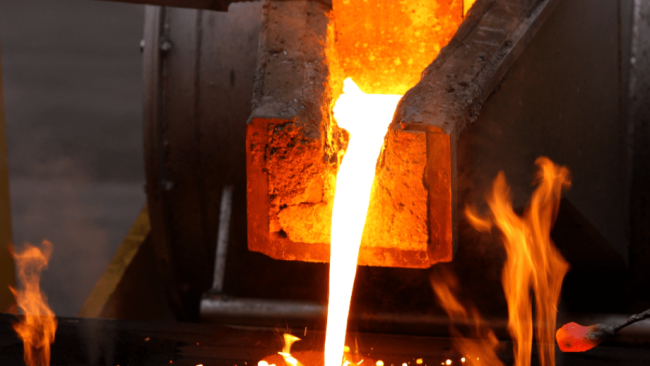Respirable crystalline silica dust – the next asbestos
8 March 2023

What is respirable crystalline silica?
Respirable crystalline silica (RCS) is created by a range of manufacturing processes – from working stone, to kitchen worktops, and even distressing jeans. It is a particular problem in foundry practices, where green sand is used in metal moulds. The dust produced by this material is not visible to the naked eye. The particles are 100 times smaller than normal sand, making them easily inhaled. Once the particles penetrate the lungs, they stay there.
In foundry operations, workers who clean casting moulds made of green sand are at risk of breathing in high concentrations of RCS. Long-term exposure to RCS can lead to a number of life-limiting health conditions, such as asthma, bronchitis, COPD, silicosis, and even lung cancer.
What is silicosis?
Silicosis forms scar tissue in the gas exchange tissue of the lungs, which inhibits oxygen uptake into the bloodstream. The British Occupational Hygiene Society estimates that 500 workers die in the UK every year from silicosis, with those infected by Covid-19 being more vulnerable. Silica inhalation is also linked to over 4,000 deaths per year in the UK from COPD.
The health risks are so severe that in 2020, an All-Party Parliamentary Group on respiratory health published a report naming silica dust the next asbestos.
How to reduce workplace exposure to silica dust
It is vital to first assess the level of workers’ exposure to dust inhalation to ensure that adequate control measures are devised. The assumption of compliance is not enough; measures are required to prove that the risks have been adequately assessed.
- Observations by a qualified occupational hygienist can assess workplace practices to identify problem areas and suggest improvements to reduce employee dust exposure.
- Local exhaust ventilation (LEV) systems significantly reduce worker exposure to respirable dust. They may keep worker exposure to respirable silica below permissible limits and eliminate the need for workers to wear respiratory protective equipment (RPE).
- Silica Dust Monitoring can monitor workplace air quality through the use of personal samplers to assess the exposure of employees to dust that is created by operations.
- High-efficiency vacuums or dust suppressant tools may be used to remove dust from the workplace.
- RPE – high specification dust masks can be used if other measures do not reduce the risk. Workers must be trained to use them properly, face-fit tested and clean shaven, in order to achieve maximum protection.
RCS is classed as a carcinogen (when generated as a result of a work process), so exposure must be reduced to as low levels as is reasonably practical. The Workplace Exposure Limit (WEL) is low at 0.1mg/m3 (8hr time-weighted average (TWA)), which must not be exceeded.
Our trained and accredited Occupational Hygienists have many years of experience in workplace air monitoring. If you need help with your workplace processes, contact us.
